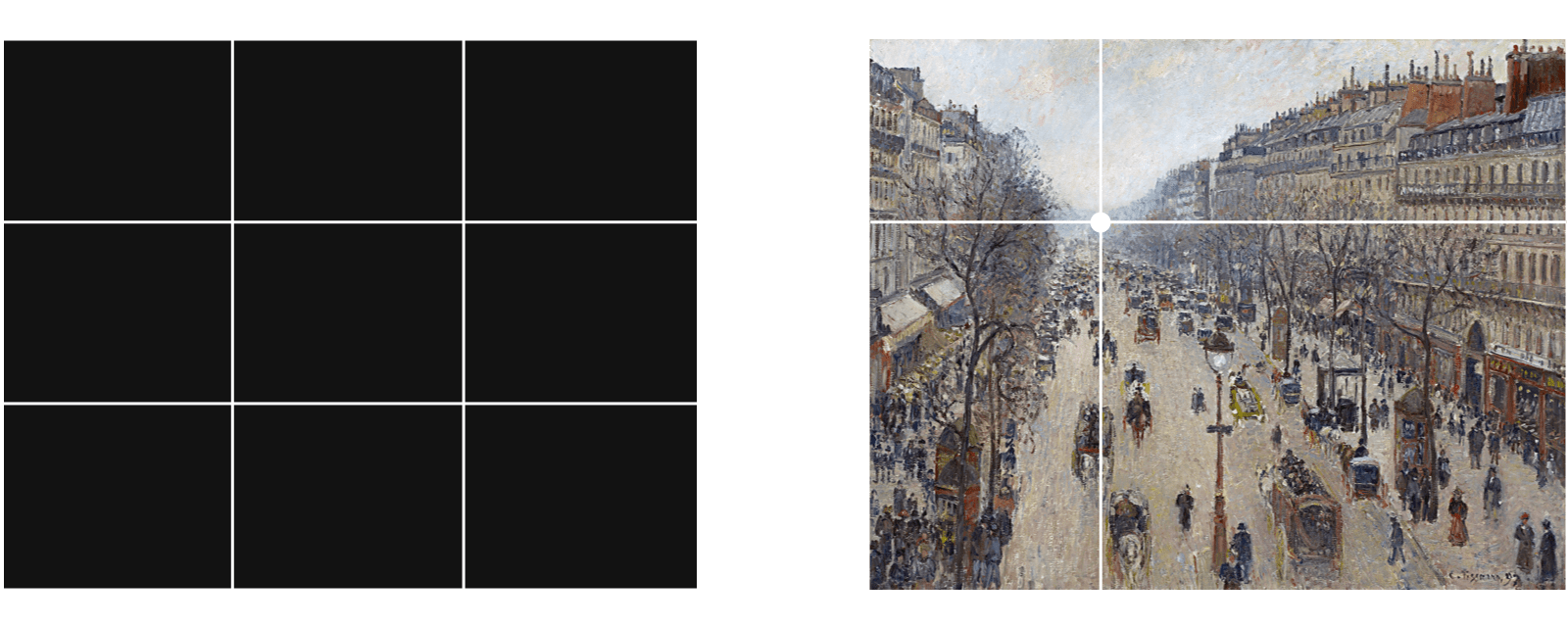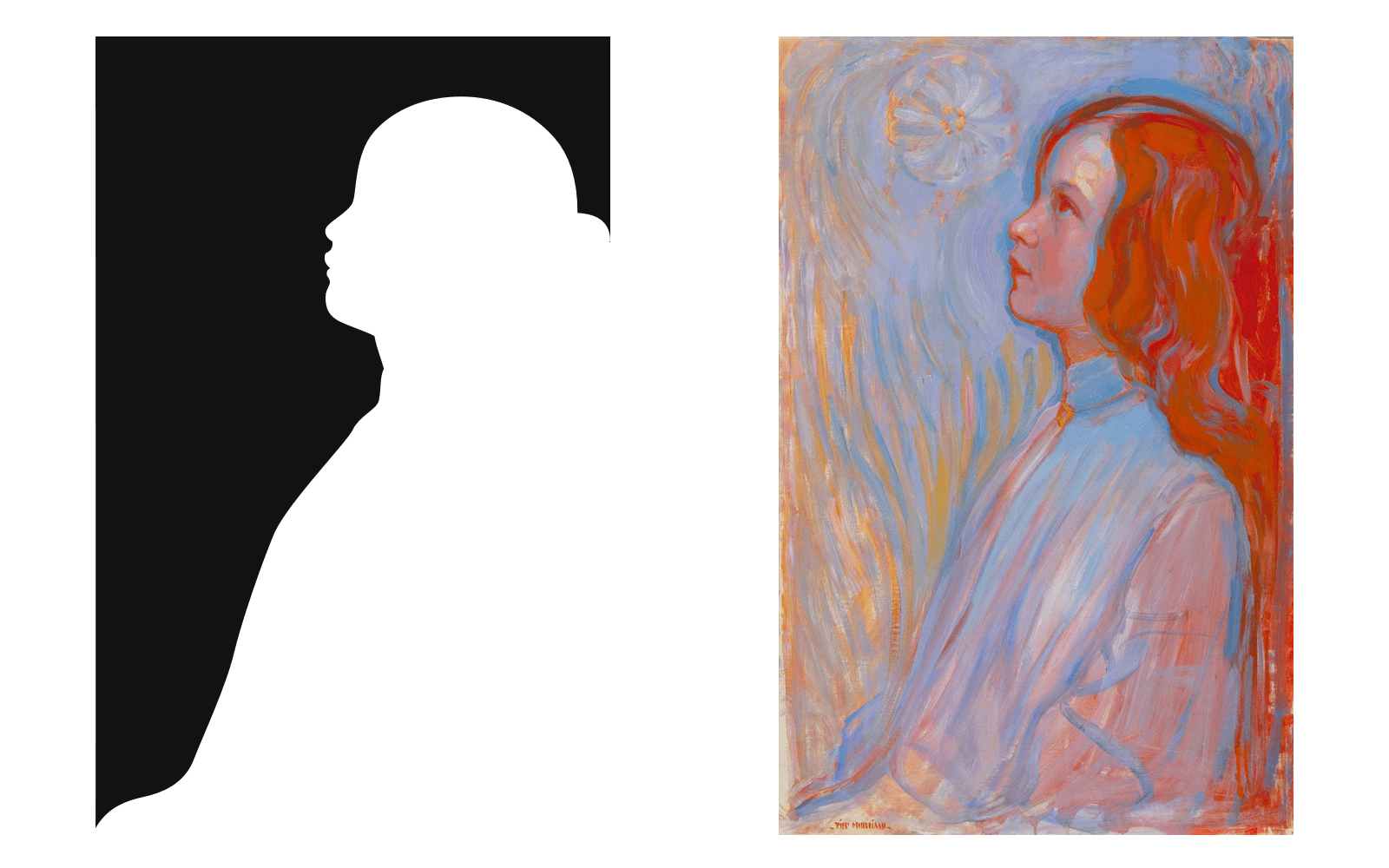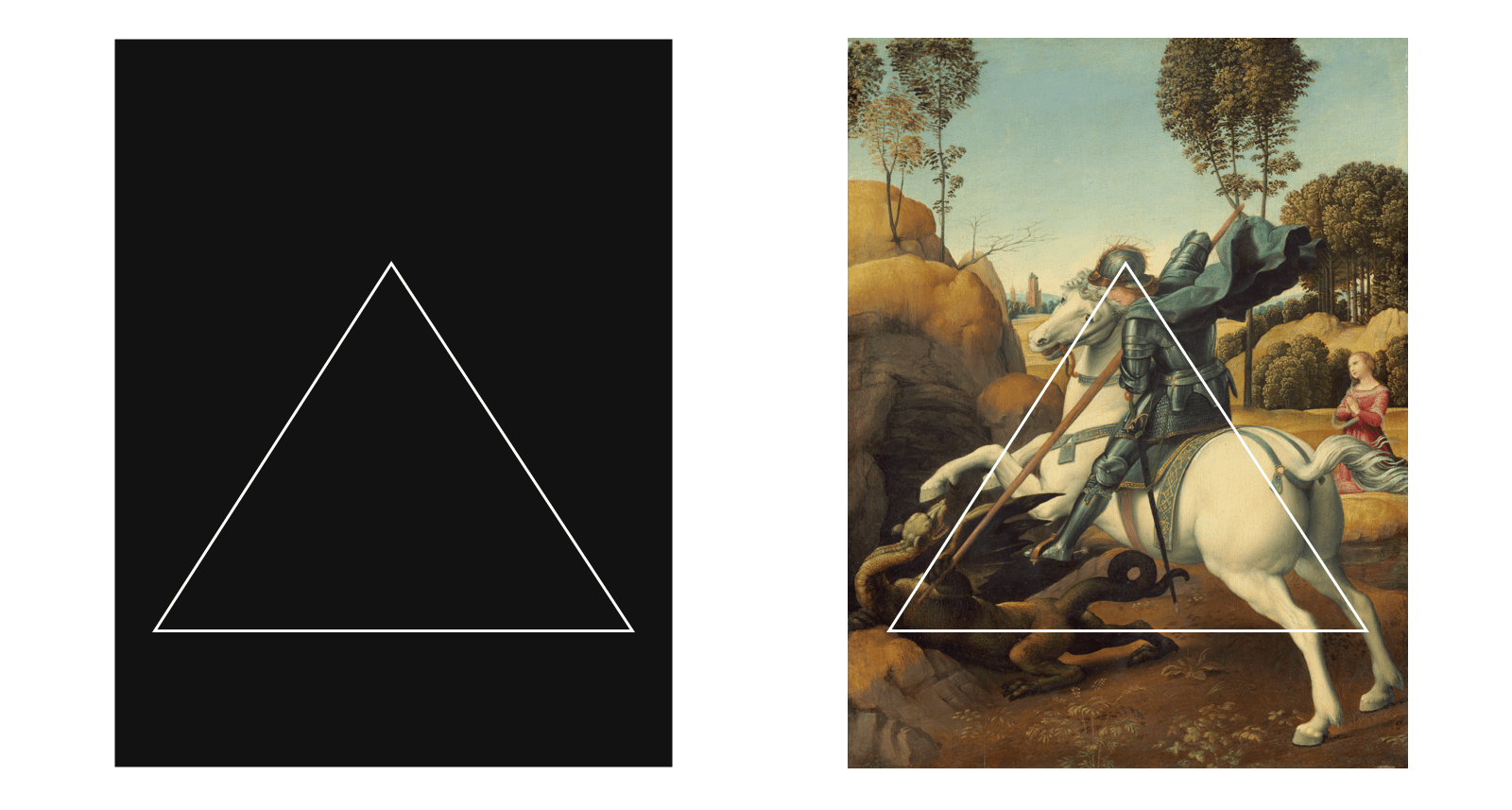Basic Composition Techniques
A few easy tips


Great artwork engages our eyes and minds in a huge variety of ways, astonishing us with their beauty or making our skin crawl with discomfort. But when making a drawing, painting, or snapping a selfie, artists often use time-tested techniques to apply the elements of design to create pleasing, engaging artworks. Let's look at some basic composition techniques:
 Divide an image into thirds vertically and horizontally, creating four points where the dividing lines intersect. Place your image's focal point at one of these four locations to create an aesthetically pleasing image.
Divide an image into thirds vertically and horizontally, creating four points where the dividing lines intersect. Place your image's focal point at one of these four locations to create an aesthetically pleasing image.
The rule of thirds is the most well-known technique for composing an image, often one of the first techniques taught in photography and drawing courses. It's an old idea, first coined in 1797 by the English engraver John Thomas Smith. But why does the rule of thirds work?
Here's our theory: there's no magic behind the 1/3rd fraction or those four specific points in an image. The rule of 3rds works because of the compositions it helps you avoid. First, it helps you avoid a symmetrical composition. When the human eye looks at an image, it starts by finding a focal point, an area of emphasis, then travels around the image from there. In an image with strong symmetry, the eye is pulled between two focal areas, and it can feel bad. The rule of thirds promotes asymmetrical compositions, which are thought to be easier on the eye. The rule of thirds also nudges your compositional focal points away from the extreme edges of the image, which can feel unbalanced and destabilizing.
The rule of thirds works not because it's magic, but because it's an easy-to-remember system that promotes a simple application of the principles of design.
 An odd number of subjects or focal points is more interesting to the eye than even numbers.
An odd number of subjects or focal points is more interesting to the eye than even numbers.
The rule of odds feels almost arbitrary at first, but to make sense of it, we can compare it to the rule of thirds. The rule of thirds encourages asymmetrical compositions, so the eye is not torn between two equal focal points. The rule of odds prevents an image from containing two equally emphasized subjects, which hinders the viewer in determining a focal point to begin exploring the image.
The rule of odds breaks down after the number 5, since the human brain can only process between 4-6 objects at a glance, before perceiving the subjects as a collection, instead of individually.
 When there is implied motion in an image, create negative space in the direction of the implied movement. Similarly, if there is a figure in an image, create negative space in the direction the figure is looking.
When there is implied motion in an image, create negative space in the direction of the implied movement. Similarly, if there is a figure in an image, create negative space in the direction the figure is looking.
When we view an image, we empathize with the image's subjects. If the image is of a running horse, we're curious where it's running. If it's a portrait of a woman glancing to the left, we wonder what she's looking at. Leaving space in the direction of implied movement or gaze rewards the viewer's empathy, and allows the eye to move or look in the same direction as the subject.
 Triangles, circles, zigzags and curves create motion and energy in an image, keeping the eye interested and moving—while straight, vertical and horizontal lines and rectangles are static and dull.
Triangles, circles, zigzags and curves create motion and energy in an image, keeping the eye interested and moving—while straight, vertical and horizontal lines and rectangles are static and dull.
It's difficult to find a single 'rule' that encompasses the power of dynamic shapes in composition, but Hogarth's Line of Beauty gets close. In 1753, the English printmaker and writer William Hogarth wrote the brilliant book The Analysis of Beauty, which you can and should read on Obelisk, here. In Analysis, Hogarth writes, "the serpentine line, by its waving and winding at the same time different ways, leads the eye in a pleasing manner along the continuity of its variety." And there's our hint: curves and dynamic shapes lead the eye, keeping the viewer's focus moving around the image.
Next, we'll look at some advanced composition techniques.